What is the name of one of the species of whales? Whale is the largest mammal
If a whale lives in water and has a fish-like body shape, then why is it not considered a fish?
Because a whale is a marine mammal that descends from earthly ancestors. Over the course of many millennia spent in the water, whales began to resemble fish in shape, but their body structure and lifestyle remained similar to land animals.
For example, a whale's fins have an internal structure that resembles a hand with five fingers. On the body of some whales there are even bones where the hind legs should be! But the most important difference between whales and fish is that, like all other mammals, whales feed their young with mother's milk. These babies do not hatch from eggs or eggs, but are born alive. And for some time after birth, the baby whale remains close to its mother, who takes care of it.
Since all mammals have warm blood, and the whale does not have fur to keep it warm in icy water, it instead has blubber, which is a layer of subcutaneous tissue filled with fat that retains heat as well as a fur coat.
And whales breathe differently than fish. Instead of gills, they have lungs into which they draw air through two nostrils located at the top of their heads. When whales dive underwater, these nostrils close with small valves to keep water out. All of the above convincingly proves that the whale is a mammal.
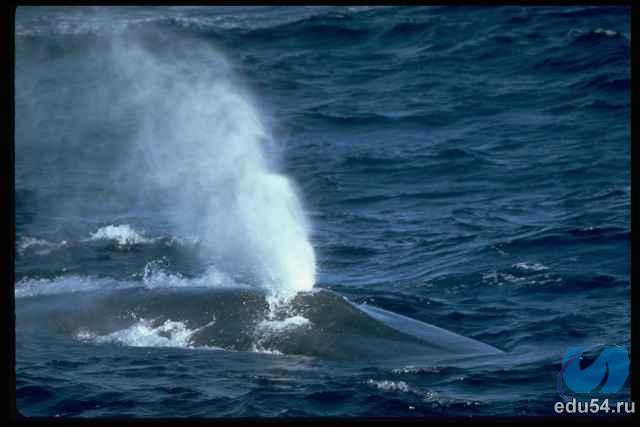
Most big whale at the same time, it is also the largest animal in the world. This is a blue whale, its length can exceed 30 meters, and its weight reaches 125 tons.
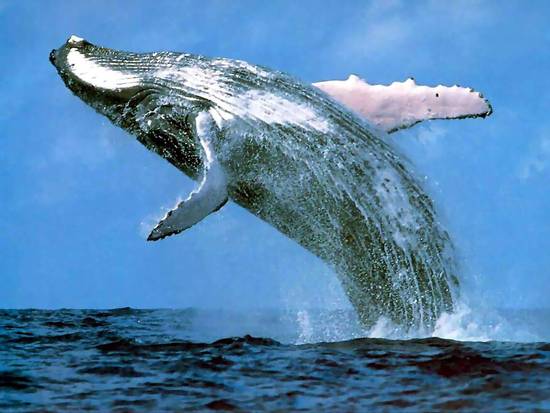
He can be found in South Seas, but most often it is found in the Pacific Ocean. It belongs to the group of toothless whales (the other group is called toothed whales).
It is quite difficult to imagine that the largest animal in the world can live without teeth. How do they do this? In their mouth they have a device consisting of hundreds of horny plates called baleen.
They grow on the roof of the mouth (the top of the mouth) and form something like a sieve. The whale feeds in the following way: with its mouth wide open, it quickly swims through the accumulation of prey, which consists mainly of small mollusks, shrimp and fish. Closing his mouth, he forcefully pushes water out of it.
The water is filtered through the whalebone, but the prey remains. The whale's mouth resembles a huge container. And the length of his head is about a third of the length of his body.
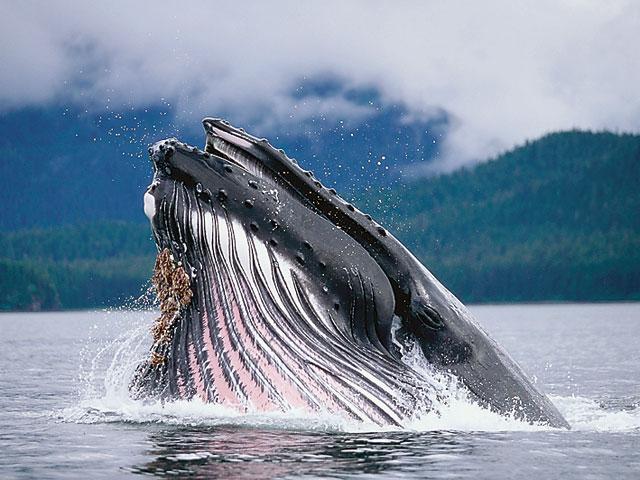
Among the toothed whales, the largest are sperm whales. They have a huge head and reach 20 meters in length.
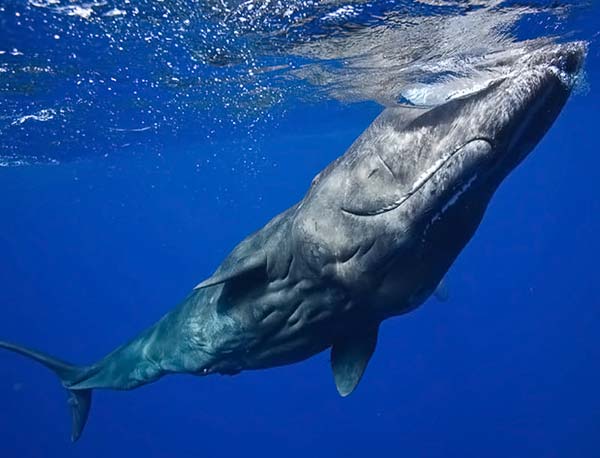
The killer whale, or killer whale (actually a large dolphin), is the only cetacean that feeds on other warm-blooded animals. The killer whale is about nine meters long, and it easily overtakes seals. Schools of killer whales even attack large whales.
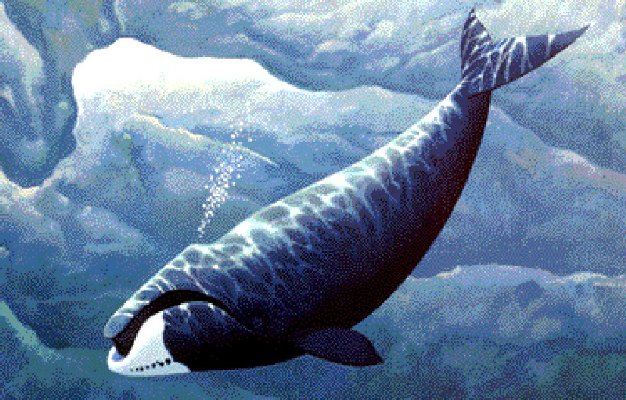
Because whales live in water and have a fish-like body, we often compare it to a fish. But their skeletal structure, circulatory system and brain are not at all similar to fish. They are warm-blooded creatures, their young are born by live birth. Baby whales feed on their mother's milk, just like other mammals.
The ancestors of whales, like all other mammals, lived on land. Therefore, whales had to adapt to living conditions in the water. This means that over millions of years, changes occurred in their bodies that gave them the opportunity to live in a different environment.
Since whales do not have gills, they breathe through lungs, and their respiratory system has undergone the most changes during evolution. Previously, their nostrils were on the front of the head, then they gradually moved upward. They now form one or two breathing holes that make it easier to obtain oxygen at the surface of the water.
Underwater, the breathing holes are closed by two small valves, and since the air passage is not connected to the mouth, there is no danger of water entering the lungs.
Whales usually come to the surface for air every 5 to 10 minutes, but sometimes they can stay underwater for 45 minutes! Having emerged to the surface of the water, the whale immediately releases the used air from its lungs. When he does this, a noise is heard that can be heard from a considerable distance. What does a whale fountain consist of? This is not water, but simply exhaust air and water vapor.
To completely change the air in the lungs, the whale blows a fountain several times, after which it plunges deeply into the water. Some whales are known to dive
depth of 600 meters! Sometimes big whales raise their tail above the water or even jump into the air, completely lifting off the surface of the water!
At one time whaling was very important. Now, to most of us, the very idea of whale hunting may seem a little strange. What good can we get from these enormous creatures?
But it turns out that the amount of valuable products obtained from whale hunting is very large. Thus, excellent fat is obtained from whale blubber (fat-containing subcutaneous tissue). This fat is used for lamps, and it is also used in making soap.
Many whales have very tasty meat. Their bones are used to make fertilizer. Spermaceti, or fat, which is found in the head cavity, is obtained from sperm whales. Spermaceti is used to make ointments, cosmetics and suppositories.
Gray ambergris is also obtained from sperm whales - a very valuable substance produced in their intestines, which is used in the manufacture of perfumes.
![]()
The teeth of the sperm whale and the tusk of the narwhal are very valuable bones, comparable to ivory. And from the skin of a white whale they produce something like leather.
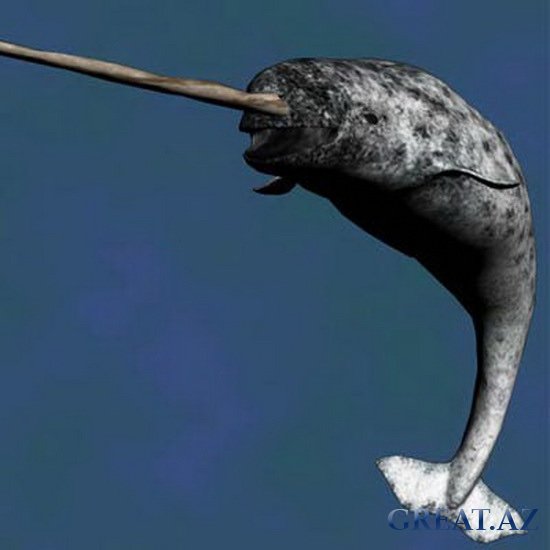
Based on materials
"Friends and Enemies of Man"
O. V. Timchenko and V. B. Shapar

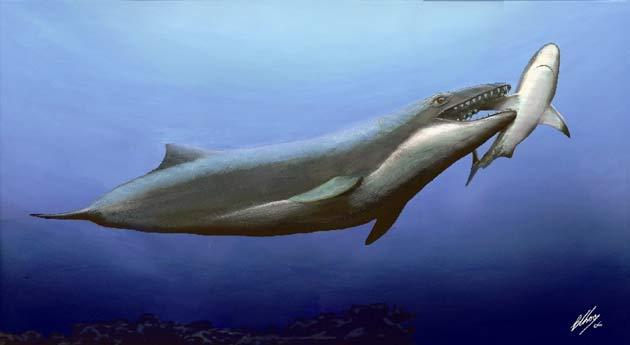
By nature of foraging All cetaceans can be classified as either filter feeders or grabbers.
Filter feeders include baleen whales, which catch prey in mass quantities using a straining apparatus (baleen) and swallow the strained organisms in whole batches. After closing the mouth, the tongue is pressed against the palate and displaces water from the oral cavity out through the cracks between the baleen plates; small organisms, like a sieve, are retained by the fringe and pushed into the pharynx by the movement of the tongue. In those whales that feed on larger pelagic crustaceans ( Euphausiidae, medium and large Copepoda), schooling fish and cephalopods, the whiskers are coarser, the plates are shorter and the fringe is thicker (minke whales are planktoichthyophages and microplanktivores). When catching prey, they move impetuously, swallowing food in large portions. On the contrary, those who consume very small, pelagic crustaceans or mollusks are equipped with elastic and long plates with a thin hair-like fringe (smooth whales are microplanktivores). Finally, whales that feed on benthic crustaceans have the coarsest and very short baleen with a thick fringe (gray whales are benthophagous). They catch prey in the bottom layers or at the bottom, scooping it up along with muddy masses (Tomilin, 1954). In the morning and evening, toothed whales feed on crustaceans and cephalopods more intensively than during the day (Nemoto, 1959).
Snatchers include toothed whales; they catch prey, as a rule, one by one; the nature of their main food leaves a certain imprint on their behavior - the depth of diving, the duration of respiratory pauses, the size of the herd, etc.
Humpback whale(Megaptera novaeangliae)
The largest number of sharp conical teeth is observed in typically piscivorous forms (up to 240 in white-sided dolphins), and the smallest in those that feed predominantly on cephalopods (sperm whales, beaked whales, gray dolphins, narwhals).
Whales are very voracious. Up to 1.5 tons of crustaceans were found in the stomach of large minke whales. Whales can satisfy their great appetite only at huge accumulations of food in cold latitudes, where a lot of whales come in the spring and summer months. The food of baleen whales is especially crowded in spring and summer. Crustaceans in cold and temperate latitudes in the zones where cold and warm currents develop in such numbers that they create brown fields visible at a considerable distance, and close-knit schools of fish (for example, herring, capelin, cod) sometimes occupy the sea surface of several square kilometers. The accumulation of food and its nature largely determine the size of cetacean herds.
Species composition of the diet Each species of the described order varies depending on its geographical distribution, ecological zone and time of year. In connection with their main food, different species of cetaceans give preference to certain zones in the ocean and, as a rule, are concentrated in areas of high biomass, developing where there is active mixing of water (“polar front”). Some (planktivores - right whales) prefer to feed mainly in the open sea, in the surface layers of water on accumulations of zooplankton (small crustaceans and pteropods); others (benthophagous gray whales) feed in shallow depths; still others (ichthyophages - most species of the dolphin family) catch schooling fish both near and far from the coast, sometimes entering big rivers and even climb them for hundreds of kilometers; the fourth (planktoichthyophagous - most minke whales) have a mixed diet of crustaceans and fish (rarely cephalopods), which are caught in the surface layer of the sea; fifths (sarcophagi, which means meat eaters - killer whales) eat fish and marine mammals, which are usually attacked by a group in any zone of the ocean; the sixth (theutophagous - sperm whales, beaked whales, gray dolphins, etc.) feed mainly on cephalopods, for which they dive for a long time and sometimes to great depths.
Changing feeding conditions according to the seasons of the year causes sharp fluctuations in the fatness of whales. Whales are most well-fed at the end of their feeding period (autumn), and the least well-fed in winter and spring, during the breeding season in warm waters, when many whales do not feed. Dolphins in our waters are at their fattest in winter and thinnest in summer (during the breeding season). The different biological state of individuals in certain seasons of the year, the unequal participation of males and females in feeding and raising young animals, and the unequal opportunities for obtaining food in animals of different sexes and ages determine the age and sexual differentiation of herds of many species of cetaceans. In baleen whales, differentiated herds are formed only in winter during the breeding season, and in summer, when food in the surface layer is equally available to all individuals, mixed herds are formed (Tarasovich, 1957).
Reproduce cetaceans, judging by the percentage of nursing, lactating and spawning females, usually after two years, but some dolphins mate while lactation is not over and breed annually. Much less often, mating of lactating females is observed in large whales (gray, humpback and true minke whales).
Basic mating season covers 3 months, but isolated cases occur throughout the year. Widely migrating species (minke whales) breed mainly in winter, in relatively warm waters, and species that do not migrate long distances (dolphins) breed in summer. In both cases, cessation of nutrition during the period of rutting and childbirth causes less damage to the body, since it is timed to coincide with favorable temperature conditions of the external environment. Only gray whales have designated places to give birth. The rut of toothed whales is accompanied by fights between males, resulting in -on the body marks of teeth remain (dolphins, beaked whales).
Well developed single young is born very large - from 1/4 to 1/2 the length of the mother's body. Occasionally, several embryos are found in females; this can be considered as evidence of the former prolificacy of the ancestors of cetaceans. The largest number of embryos in one female reached seven (in a blue whale in 1924/25 in Antarctica with the length of embryos from 97 to 135 cm) and six: three cases in a fin whale - one in 1909 in North Atlantic with embryo lengths from 44 to 89 cm (Haldahe, 1910), another on February 24, 1950 in Antarctica in a female 21.04 m long with embryos from 101 to 332 cm and a third on February 21, 1953 in Antarctica in a female 21.94 long m with the size of two male embryos 238 and 353 cm and four female embryos from 220 to 319 cm.
In large minke whales (fin whales and blue whales) among more than 30,000 embryos studied, twins accounted for only 0.6-0.9%, triplets - 0.018-0.041%. and cases with four and five embryos - 0.006-0.008%. Excess embryos during pregnancy are apparently resorbed, and only in the rarest cases can no more than two cubs be fully developed and born. The embryos of baleen whales are most often observed in the right horn of the uterus, and in toothed whales - in the left. Pregnancy different types lasts from 9 to 16 months. Childbirth occurs under water, and the baby performs the first respiratory act at the moment of the first emergence to the surface as an unconditioned reflex, in which the stimulus is the sensation of a change in environment (water-air).
The baby will be born tail first. Due to contraction of the uterus, the most mobile part of the embryo, the tail, faces the genital opening. With this orientation, the embryo passes through the mother’s birth canal more easily, since the tail part is thinner than the head part. The umbilical cord breaks at the very base, where the greatest degree of invagination of the epithelium is noted. The lactation period lasts from 4 (for some dolphins) to 10-13 months (for sperm whales) and sometimes partially coincides with a new pregnancy. Females, judging by observations in aquariums, feed their young with small portions of milk, but often, i.e. short intervals time. The cub, with the tip of the mouth and, possibly, the tongue, tightly grasps the right or left nipple, which during the lactation period swell and protrude from both pockets located on the sides of the genitourinary slit. From the first days, the sucker moves next to the female, or slightly behind her. With age, this habit weakens and disappears. The very high nutritional value of milk, the fat content of which reaches 53% and protein - 13.4%, contributes to the rapid growth of cetaceans during the lactation period. During this period, baleen whales almost double in size, and toothed whales increase by 1/3 the size characteristic of newborns. By the time the baby switches to independent feeding, the baleen plates sharply increase (functional leap).
Puberty in cetaceans it occurs between the ages of 3 and 6 years, but body growth after that continues for a period that is 1.5-2.5 times longer than the period required for puberty. Achieving full growth, or so-called physical maturity, in whales coincides with the ossification of all vertebral epiphyses and their fusion with the vertebral bodies in all parts of the spine.
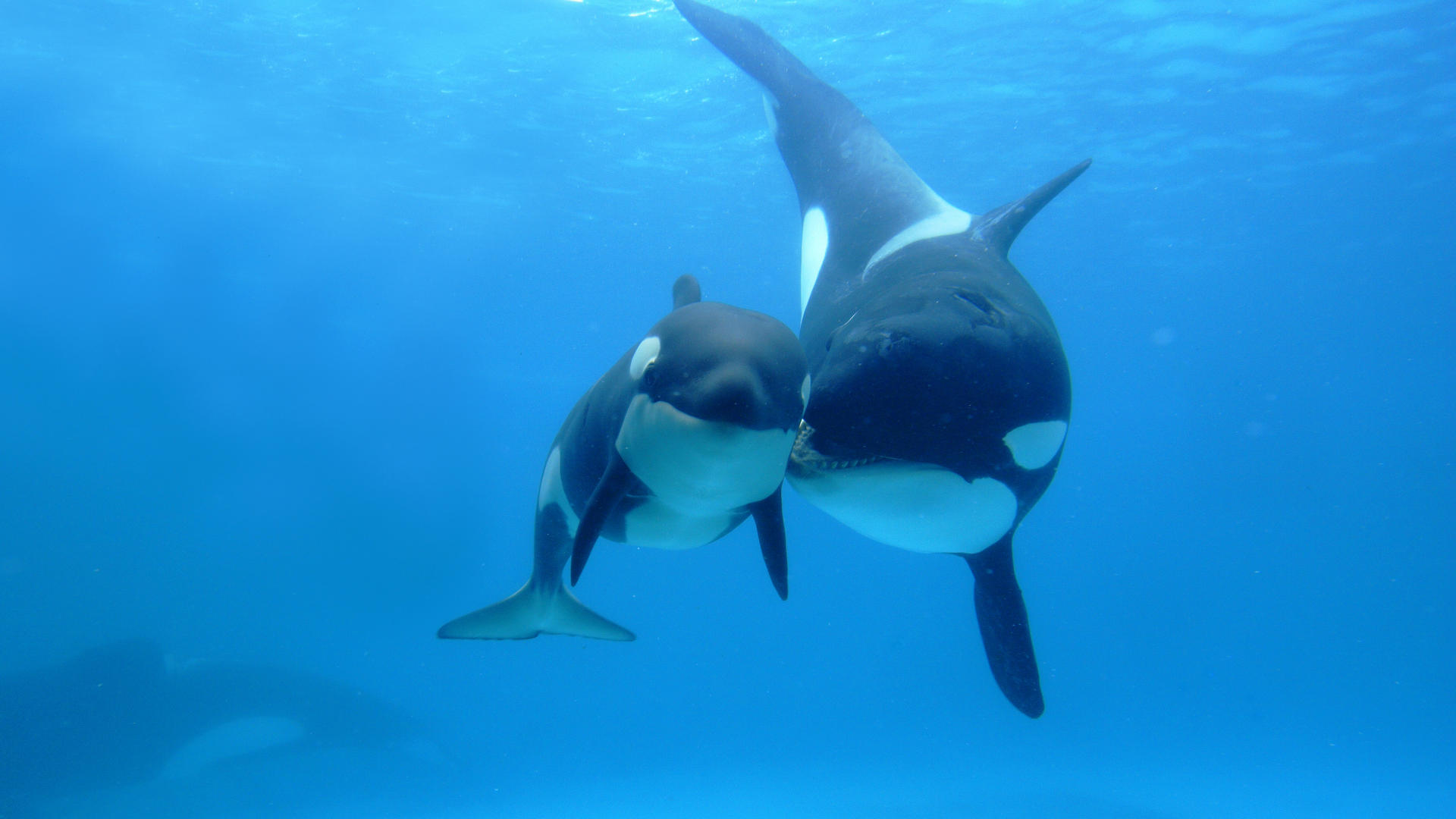
killer whale(Orcinus orca)
The process of ossification of the spine It starts from both ends, goes faster from the tail and ends in the thoracic region. Such sequential changes in the spine can be used as auxiliary signs in judging the individual age of cetaceans. The age of cetaceans is determined in four ways: 1) by the ovaries of females; 2) on whalebone plates; 3) from the ear plugs of baleen whales and 4) from the teeth of toothed whales. It is much easier to determine age by the gonads of female dolphins.
By whalebone age is determined by counting irregularities (“annual steps”) on the surface of the baleen plates, reflecting the seasonal periodicity in the growth rate of whalebone.
In the first years of life of baleen whales, the growth of plates from the base outpaces the rate of wear from the tips, and then up to 5-7 “annual steps” can accumulate on the baleen of minke whales, and up to 15-20 on the baleen of right whales. Subsequently, the growth rate and wear rate are equalized, as a result of which the height of the plates stabilizes and further accumulation of annual rings stops. Therefore, baleen can serve as an age indicator only in the first period of whale life.
The age of baleen whales is most accurately determined by the layered structure of the ear plugs in the ear canal. Ear plugs vary greatly in shape: their core is laid before the whale is born. With age, the ear plug grows in thickness at its proximal end, covering the apex of the membranous digital process. Alternating dark and light layers of ear plugs are formed periodically, two (one dark and one light) layers per year. The dark layers consist of degenerated carotenized epithelial cells of the membranous finger-shaped process protruding into the ear canal, and the light layers consist of various fatty inclusions. The rhythmicity of the formation of dark and light layers is explained by the periodic influence of hormones and enzymes in the whale’s body on the degeneration of epithelial cells (Icbichara, 1959) and, possibly, changes in metabolism due to migrations. The disadvantage of this method is that it is very labor intensive to remove ear plugs from the ear canal of animals, although the method of making sections for counting layers has now been simplified (Zemsky, 1960).
In toothed whales, the concentric layers of dentin in the teeth are of particular importance for determining age, reflecting periodic changes in the physiological state of the body, possibly due to seasonal changes in feeding conditions and breeding cycles. The dentin layers deposited after birth are separated from the dentin formed during the embryonic period by a clear neonatal line, which is formed as a result of a sharp change in nutritional conditions on the verge of the embryonic and lactation periods.
Using bottlenose dolphins born in captivity with a known age in advance, Sergeant (1959) showed that in dolphins one complete layer of dentin, including light and dark parts, is deposited annually, and the light part is deposited in the spring. However, the beluga whale and possibly the pilot whale deposit two full dentin layers each year, with the pilot whale developing the dark part in the summer.
Sperm whales apparently deposit two complete dentin layers annually, the calculation of which is greatly complicated by the presence of several thinner layers in these layers.
The largest number of layers in the ear plugs indicates that toothed and baleen whales live up to 50 years. Some right whales and sperm whales wore harpoons embedded in their bodies for up to 40 years, and the oldest tags were recovered from 15 fin whales after 24, 25 and 26 years (the whales were tagged in Antarctica in 1934 and 1935, and captured in 1959, 1960 and 1961; Brown, 1959, 1960, 1961).
Literature: Professor Tomilin Avenir Grigorievich. Cetacean fauna of the seas of the USSR, 1962
Whales are mammals...
Whales are very peculiar mammals. They are fully adapted to life in water, and have become more like fish than land animals (whales presumably descended from artiodactyl land mammals, which switched to a semi-aquatic lifestyle about 50 million years ago). Cetaceans have a characteristic appearance, but at the same time they differ significantly from each other. Whales is a collective name for large species; small cetaceans - dolphins, porpoises - are not included in this group.
In ancient times, people already knew that cetaceans are warm-blooded mammals and breathe air. These heaviest mammals are protected from hypothermia by a thick layer of fat, the forelimbs are transformed into flippers, the hind limbs are atrophied, the tail ends with a large horizontal fin, and they feed their young with milk. It’s so easy to conjure up the image of a whale!
Only people and whales can sing songs. White whales are the most talkative and singing. Because of their wide range of cooing and chirping sounds, people have given them an affectionate nickname: “sea canaries.”
Whales have low fertility. Female whales reach sexual maturity at 7-15 years, males only at 15-25. Each animal participates in reproduction approximately once every 2 years, sometimes less often. Whales do not compete with each other during the mating ritual, but attract the attention of females with songs! Despite their enormous size, whales have a surprisingly subtle voice. The set of sounds differs from species to species, but, just like in humans, different individuals of the same species have an individual timbre of their voice. The whale's singing is so loud that the water around it vibrates. It sounds like a melodic moan.
Female whales can mate with multiple males. Moreover, due to the lack of competition between them, the selection criterion for conception is the highest hormonal status of the partner. The fact is that the gonads of whales are enormous in size (for example, in the sperm whale up to 10-20% of body weight) and are capable of producing large amounts of sperm.
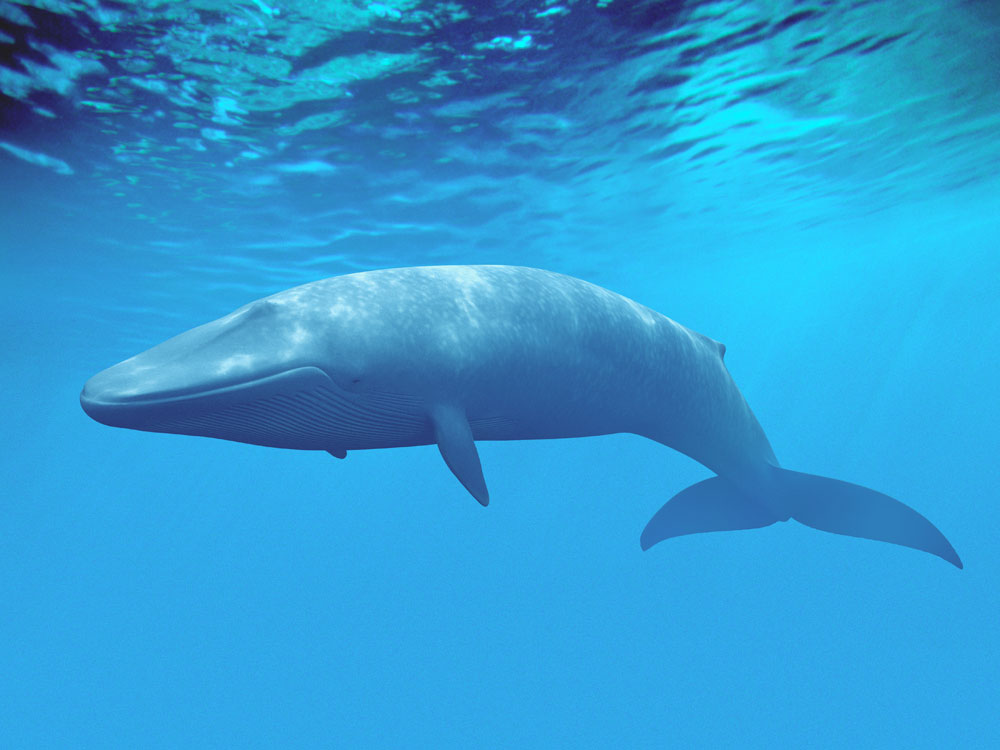
Pregnancy in various species of cetaceans lasts 11-18 months. The female gives birth to one cub, but it is large and developed. A baby whale is born underwater with its tail first and is immediately able to move independently. The mother helps him rise to the surface of the water for his first breath. The baby whale's body is proportional to the body of an adult whale, and the length is about 1/4 the length of the mother's body. A newborn blue whale reaches approximately 8 meters in length and weighs 2-3 tons.
However, despite the gigantic dimensions of the animals themselves, the whale egg is no larger in size than the egg of an ordinary field mouse. Females of some cetacean species can become pregnant again during lactation, shortly after giving birth.
The female feeds the calf underwater, each feeding lasting only a few seconds. The mother's nipple is placed in the whale's mouth between the tongue and the top of the palate, and the baby sperm whale holds the nipple in the corner of its mouth. The female has special muscles that, contracting, spray milk into the oral cavity of the baby.
Feedings occur very often. Bottlenose dolphin calves feed approximately every 26 minutes, day and night. The baby whale feeds on its mother's milk for the first 5-7 months of its life. The female's mammary glands are located on the sides of the genital opening: two nipples (one on each side) are hidden in slit-like folds and only protrude out during lactation. The mammary glands of female whales produce a very large amount of milk per day: 90-150 liters for the fin whale and 200 liters for the blue whale. The milk is thick and creamy. The surface tension of milk is 30 times greater than that of water, which avoids mixing with it during underwater feeding. Whale milk is very nutritious, which ensures such a colossal growth rate: a blue whale calf gains about 4.5 cm in length per day. In six months, the “giant baby” doubles the length of its body (up to 15 meters) and reaches a weight of 20-25 tons , then the growth rate decreases.
For 1.5-2 years, the cub follows its mother and enjoys her protection. Female whales have a highly developed maternal instinct.Young individuals of small and medium-sized whales stay in herds until they reach sexual maturity, sometimes longer. The lifespan of large cetaceans is 50-70 years.
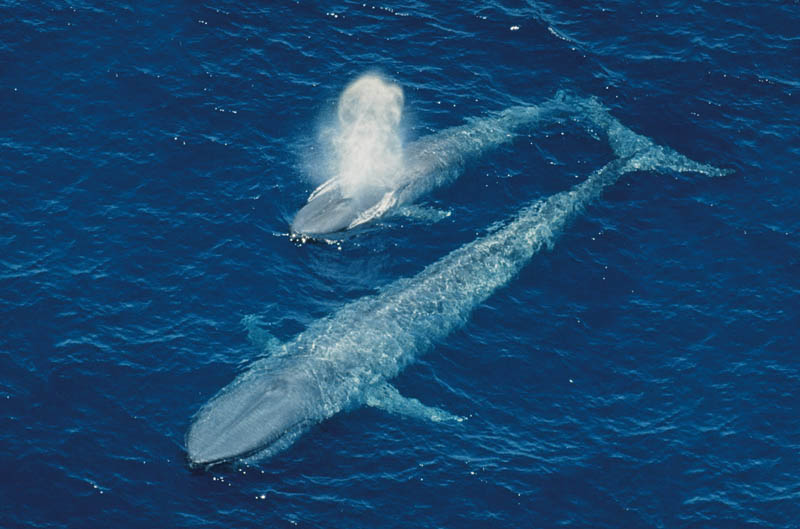
Whales are found near the coasts and in the open sea, but do not enter shallow waters; they live in all oceans of the globe. They move freely across the ocean, but each species has favorite places breeding grounds, where they arrive in a certain season. The rest of the time, whales fatten up in areas remote from their breeding grounds. Whales complete their migratory cycle over the course of one year.
Most species of cetaceans are gregarious animals, living in groups of several dozen to several hundred individuals. There is a peaceful atmosphere inside the herd: the whales have no internal hierarchy, they do not show aggression towards each other, in case of danger, all members of the herd try to defend themselves with common efforts, and even try to help their wounded brothers.
Makarova Veronica,
Lactation consultant, Moscow
The cetacean order is about 70 million years old. All connections with land have long been lost. Adaptation to life in the seas is higher among cetaceans than among all others. aquatic mammals. Their forelimbs were transformed into flippers, and their hind limbs disappeared completely, but from two small bones located on the pelvis, it can be judged that they once existed. The body looks like a fish, but caudal fin It is not located vertically, like in fish, but horizontally.
Zoologists divide modern cetaceans into 2 suborders: toothed and baleen whales. The first ones have teeth: there can be up to 272 of them (a record for animals!). In baleen whales, instead of teeth, transverse plates grow on the sides of the upper jaw - whalebone. With its help, the whale filters the water so that small crustaceans, fish and squid remain in the mouth.
DOLPHINS. The dolphin family belongs to the suborder of toothed whales. It is extensive (more than 50 species), intelligent and very<говорливое>. Dolphins make sounds in a wide range - from those heard by the human ear to ultrasound.
Undoubtedly, dolphins are very capable: they can count, perform various tricks, and can even fight off sharks. All this speaks of the intelligence of dolphins, but, alas, no more than that of other animals - dogs, elephants, monkeys.
Playful and quick-witted bottlenose dolphins are common in warm and temperate zones of all oceans; they also live in seas, for example, the Mediterranean and Black Sea. In the early 50s. XX century in the Black Sea there were 2.5 million, but 40 years later, due to pollution by industrial wastes, their number decreased to 100 thousand individuals.
Tireless companions of ships, white-sided dolphins have become famous as one of the fastest cetaceans. They are capable of swimming at a speed of 50 km/h.
Common pilot whales live in small schools in the North Atlantic, Pacific and Indian Oceans. They have a very developed herd instinct. If at least one individual ends up on the shore, the entire herd of 200-300 animals rushes to the rescue in response to distress signals and sometimes dies.
The beluga subfamily includes 2 species: narwhals and beluga whales. The beluga whale has 16-20 teeth in each jaw; the male narwhal has only one incredibly long, up to 3 m, tusk to the left of the upper jaw. It's twisted like a corkscrew and incredibly sharp. Narwhals live in winter and summer surrounded by Arctic ice, and in the north they swim almost to the Pole.
Sailors call beluga whales<морскими канарейками>not only for its white and yellow color, but also for<песнопения>often quite musical.
WHALES. Whales have no sense of smell, vision is relatively weak, but their hearing is excellent. They signal to each other, navigate their way and find prey using ultrasound. Female whales almost always give birth to one calf. Their milk is very nutritious and contains no more than 50% water. Therefore, newborn whales grow very quickly. A baby blue whale, for example, gains 100 kg in weight and almost 4 cm in length every day in the first 7 months of its life! And during feeding, the female loses 30 tons - 1/4 of her weight.
There are six species in the minke whale family. Five of them - the blue whale or vomit whale, fin whale, sei whale, Bryde's whale and minke whale - look like smaller copies of each other.
The blue whale is the largest animal on earth. Its average length is about 24 m. But in 1909, a whale was caught 34 m 58 cm long and weighing over 150 tons!
Whales are usually depicted with fountains above their heads, but these are jets of warm air that the whales exhale. In cool weather it instantly turns into steam.
The sperm whale is the largest toothed creature in nature. Previously, specimens with a length of 25.6 m and a weight of up to 100 tons were encountered. Now, 20-meter ones are rare. The narrow, 3-4 m long lower jaw of the sperm whale is armed with fifty massive teeth about 20 cm long and weighing from 1 to 3 kg. These whales swim in all oceans except the Arctic. In summer, they migrate from the subtropics and tropics to the waters of temperate and cold zones.
Male sperm whales most They live in small herds, and females with calves and young whales, often accompanied by an old male, live separately.
In July or August, the sperm whale gives birth to one calf, 4 m long and weighing more than 1 ton, which she feeds with milk for 10-11 months. Small sperm whales grow very quickly and become adults by 4-6 years.
Sperm whales are excellent divers. It is reliably known that they can dive to depths of up to 1100 m.
This article is dedicated to amazing and unusual animals, which some still consider to be fish - cetacean. Why be surprised if even in children's fairy tales such a phrase as “fish-whale” sounds! "Cetaceans" (from the Latin word Cetacea) are a fairly large order of mammals that have formed and adapted exclusively for life in water.Order Cetaceans and its representatives
Body structure cetaceans very similar to the structure of a fish. IN Everyday life All these animals are usually called whales. The exception to the order under consideration is the family of porpoises and dolphins. The scientific Latin name for this order is “cetus”. The Russian word “whale” comes from Greek and literally means “sea monster”.
At all, are the largest animals of all the animals that live on our planet. As for the origin of these creatures, it is believed that they descended from artiodactyl land mammals, which were able to further adapt to a semi-terrestrial - semi-aquatic lifestyle about fifty million years ago. IN modern world There is a wide variety of these fish-like marine animals.
The blue whale is the largest whale, the largest living animal, and probably the largest animal to ever live on Earth.
All numerous order cetaceans They are usually divided into two suborders: toothed whales (Odontoceti) and toothless or otherwise baleen whales (Mysticeti). Representatives of these suborders differ significantly from each other not only in their appearance, way of life, but also in their internal structure.
Order Cetaceans unites thirty-eight genera, which include more than eight dozen species of marine mammals. About thirty species of cetaceans can be found in Russia. In order for you to get your bearings a little, to understand what these animals are and who belongs to the cetaceans, let's look at their accepted classification:
- Suborder Odontoceti - Odontoceti divided by:
— Family Delphinidae — Dolphinidae is quite numerous and includes killer whales, white-sided dolphins, bottlenose dolphins;

Bottlenose dolphin (or bottlenose dolphin) with calf
- Family Phocoenidae - Porpoises includes four species of porpoises, the finless porpoise (Neophocaena phocaenoides) and the white-winged porpoise (Phocoenoides dalli);
- Family Monodontidae - Narwhals includes the beluga whale (Delphina pterusleucas) and the unicorn (Monodon) which includes the narwhal (Monodon monoceros);
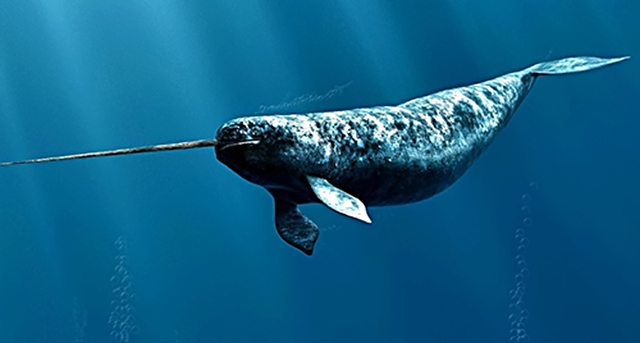
Narwhal
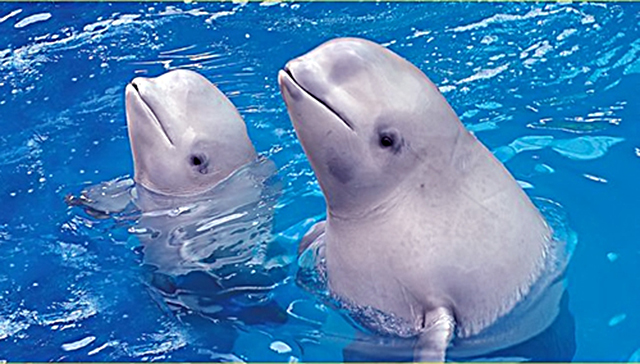
Beluga whales
— Family Physeteridae — Sperm whales. This family includes the sperm whale (Physeter macrocephalus);
- Family Kogiidae - Dwarf sperm whales. Sometimes this family is referred to as the sperm whale family. It includes the dwarf sperm whale (Kogia breviceps) and the little sperm whale (Kogia simus);

Sperm whale
- Superfamily Platanistoidea - River dolphins includes the Family Iniidae, which in turn includes the Amazonian dolphin (Inia geoffrensis);
— Family Platanistidae. The Gangetic dolphin (Platanista gangetica) belongs to this Family. This species is sometimes divided into two subspecies;
— The family Pontoporiidae is represented by the La Plata dolphin (Pontoporia blainvillei);
— Family Lipotidae. It includes Chinese river dolphin(Lipotes vexillifer);
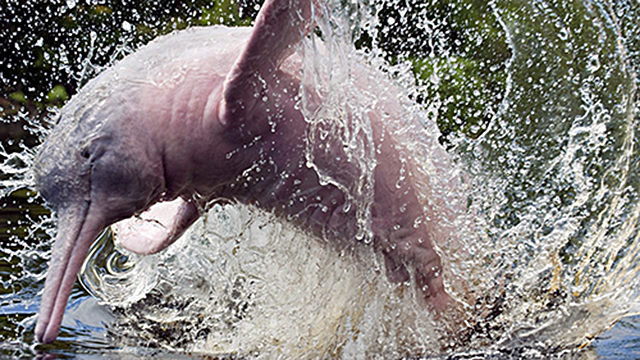
Amazon river dolphin
- Family Ziphidae - Beaked. It includes swimmers or otherwise Berardius - only two species, bottlenose whales (Hyperoodon), also two species, belted whales (Mesoplodon) - fourteen species, longman's whale (Indopacetus pacificus), beaked whale (Ziphius cavirostris) and Tasmanian beaked whale (Tasmacetus shepherdi ).
![]()
Beaked whale
- Suborder Mysticeti - Toothless whales divided by:
— Family Balaenidae — Right whales. It includes three species of southern right whale (Eubalaena) and the bowhead whale (Balaena mysticetus);
— Family Eschrichtiidae — Gray whales, which actually includes the gray whale itself (Eschrichtius robustus);
- Family Balaenopteridae - Minke whales includes the subfamily Balaenopterinae, which includes eight species of minke whales and the subfamily Megapterinae, which includes the humpback whale (Megaptera novaeangliae);
- Family Neobalaenidae, which includes a single representative - the dwarf right whale (Caperea marginata).
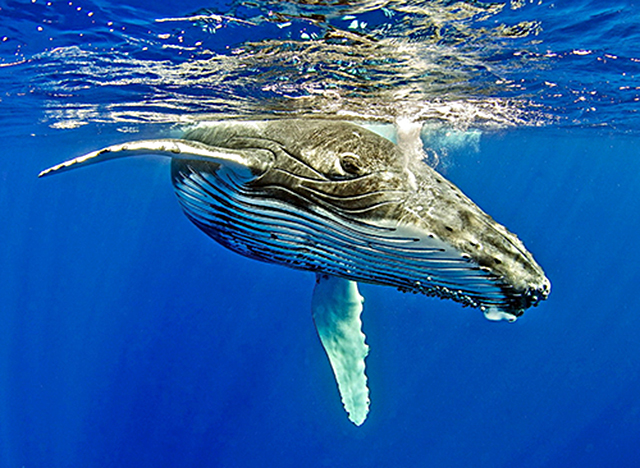
Humpback whale
Appearance and lifestyle of animals that make up the order Cetaceans
As you already understood order cetaceans - This is a very large detachment, which includes dozens of species of different representatives of these marine animals. They are all significantly different from each other, however, they have a lot in common. The most common and prominent representatives of this order have been familiar to us since childhood. After all, it is not at all necessary to be an expert in order to distinguish, for example, a whale from a dolphin.
The smallest of order of cetaceans Hector's dolphin and white-bellied dolphin are considered. The length of these “babies” is a maximum of 120 cm, but they weigh only 40 – 45 kg. The largest of the cetaceans is recognized blue whale. The body length of this giant can reach as much as 33 meters, and its weight can be more than 150 tons! Despite all the differences cetaceans and fish, they are united by certain similarities in appearance, habitat, lifestyle, and much more. Outwardly, these animals are very similar to fish, but differ primarily in that they are warm-blooded and breathe with lungs rather than gills. Their body temperature ranges from 36 to 40 C.
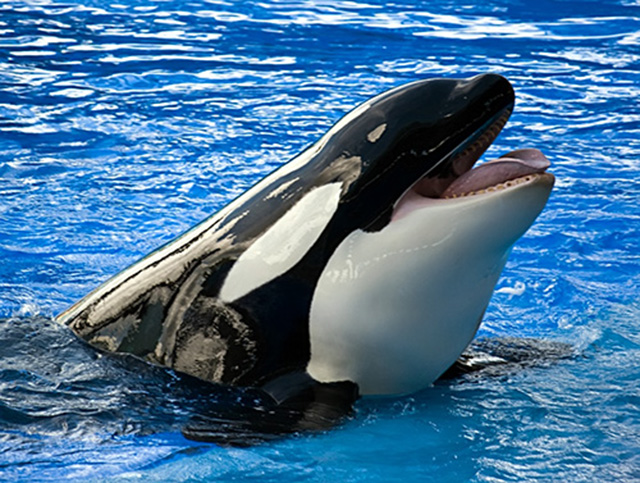
Great killer whale
The peculiarities of the respiratory and circulatory systems allow them to continuously stay under water, once making a supply of air, for up to an hour and a half! The skin of cetaceans, unlike most fish, is devoid of scales and contains remnants of hair (vibrissae). The structure of their bodies is streamlined, which allows them to experience the least friction, and therefore water resistance when swimming. This is also facilitated by their smooth, firm and elastic skin, completely devoid of hair. The color of numerous species of cetaceans varies from solid to spotted or counter-shaded (dark back and light belly). In some species it may change with age.
Like land mammals, young animals from order cetaceans They do not develop in the external environment, but in utero, and after birth they are fed with milk. Most species are herd (collective) animals and therefore gather in groups of several tens, hundreds and even thousands of individuals. Cetaceans are distributed throughout the world, they can be found in all oceans and in most seas. Among them there are heat-loving species, i.e. tropical and subtropical, cold-loving species of polar and subpolar waters, as well as species with a wide habitat.
![]()
Gangetic river dolphins
Cetaceans They are found both in the open sea and very close to the coasts. Some species can even enter rivers and live there for a long time. Some species of these mammals are characterized by seasonal migrations over short distances, others by long migrations covering many thousands of kilometers, and still others prefer an almost sedentary or nomadic lifestyle within a small water area, that is, “not far from home.”
According to the method and nature of nutrition, they are divided into four groups:
- ichthyophages - species that feed mainly on fish;
- planktivores - species that are characterized by feeding on plankton;
- saprophages - species that feed on decaying organic remains and substances;
- Teutophagous - species that consume various cephalopods.
Thus, food of different types cetaceans does not differ in gastronomic diversity and is very specialized, however, among the representatives of the genus in question, there is only one that periodically and regularly feeds not only on fish and, but also on warm-blooded creatures, such as seals, birds, and even their own kind. This species is the killer whale.
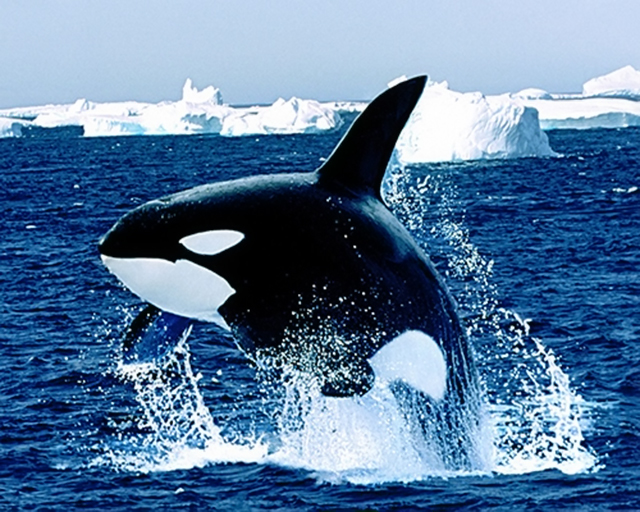
Great killer whale
live relatively long: small species - up to thirty years, large ones - up to about fifty.
It must be said that the animals that make up order cetaceans not only numerous, but also very diverse, unusual and interesting, which means they deserve attention. These articles will tell you about some types of mammals:
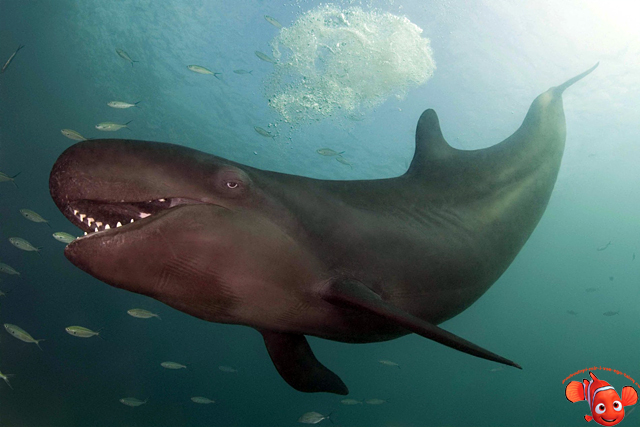

We invite you to look at these interesting documentaries, which will introduce you to the life of these amazing mammals, which are called :
